Example structures
Glulam in low-rise houses
Skip table
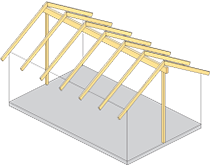 |
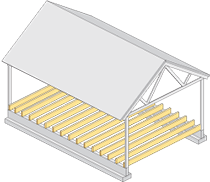 |
| Rafter, along length of ridge, two supporting posts. Rafters, transverse, two supports. |
Floor joists, single span, two supports. |
 |
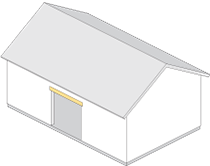 |
| Rafters, two lengthways, two supporting posts. Rafters, transverse, two supports. | Lintel over door or window opening in external wall.. |
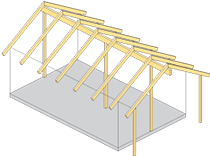 |
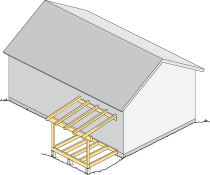 |
| Rafter, along length of ridge, three supporting posts. Rafters, transverse, two supports. | Terrace – rafters, floor joists, binders and posts. |
Glulam in larger buildings
Skip table
 |
 |
| Straight beam on posts 10–30 m. | Curved beam on posts 10 - 20 m. |
 |
 |
| Pitched beam on posts 10 - 30 m. | Boomerang beam on posts 10 - 30 m. |
 |
 |
| Tied roof truss on posts 15 - 40 m. | Three-point portal with finger-jointed haunches 15 - 25 m. |
 |
 |
| Strutted three-point portal 15 - 30 m. | Three-point portal with curved haunches 10 - 50 m. |
 |
 |
| Three-point tied arch on posts 20 - 60 m. | Truss 30–80 m (straight or curved). |
Structural design
The best way to achieve a lasting structure is to employ design details that keep the glulam free from moisture. End-grain wood surfaces should be protected against moisture penetration when in contact with damp material such as concrete. Here are a few examples of designs for post supports and protruding beam ends.
Skip table
 |
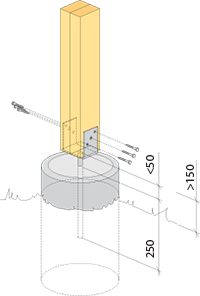 |
| Two examples of moisture-resistant post support designs. Cast steel plate (left), post base (right), used to underpin glulam posts for verandas and carports. | |
 |
|
| Example: Damp-proof design for protruding glulam beam | |
